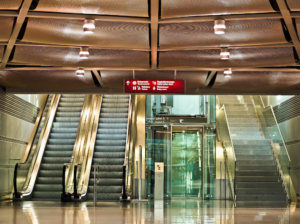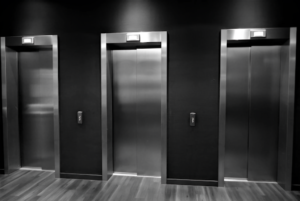In the bustling environment of modern commercial buildings, where the flow of people and goods shapes the overall experience and functionality, elevators emerge as silent workhorses. They are not merely a convenience but vital systems that enhance accessibility and efficiency in towering structures. As urban spaces continue to grow upward, the reliance on well-designed elevator systems becomes increasingly crucial. Elevators bridge the gap between levels, facilitating seamless movement throughout multi-storey environments contributing to commercial establishments’ overall design, functionality, and operational success.

Enhancing Accessibility and Mobility
Elevators are crucial in enhancing accessibility and mobility for everyone, including individuals with disabilities, older people, and people transporting heavy items. By providing a reliable means to navigate between floors, elevators remove barriers that can restrict movement within commercial buildings. In addition to meeting regulatory compliance, such as the Americans with Disabilities Act (ADA), well-designed elevator systems can significantly improve the user experience by ensuring that all visitors, regardless of their mobility challenges, can easily access different building levels.
This inclusivity reflects a commitment to equal access and encourages greater patronage and engagement with the establishment. Partnering with elevator service providers at Metro Elevator can help ensure that your building’s elevators are designed and maintained to meet the highest accessibility standards, promoting inclusivity and providing equal access for all individuals. Business owners and property managers can take pride in knowing that their establishments are welcoming and accommodating to all patrons.
Improving Efficiency and Safety
Aside from accessibility, elevators also play a critical role in improving efficiency and safety within commercial buildings. In bustling environments where time is of the essence, having reliable and fast elevator systems can significantly impact daily operations. Elevators can quickly transport large groups of people or heavy items between floors, reducing wait times and increasing productivity.

Well-maintained elevators enhance a building’s safety. Regular inspections can catch issues before they become major problems, preventing disruptions. Elevators with safety features such as fire-rated doors and backup power can ensure safe evacuation in emergencies like fires or power outages.
Enhancing the Aesthetics and Design of a Building
Elevators are functional and serve as design elements in modern commercial buildings. With advances in technology and design, elevators can now be customized to complement the aesthetics of a building, making them visually appealing while maintaining their functionality. Elevator interiors can be designed with sleek and modern finishes, adding sophistication to the overall look of a building’s interior design. Customized elevator cabs can also feature branding elements that align with the establishment’s identity, enhancing its visual impact on visitors.
Contributing to Sustainable Practices
In addition to accessibility, efficiency, and design, elevators also impact commercial buildings’ sustainability and energy efficiency. By using state-of-the-art technology, elevators can be designed to optimize energy usage, reducing their carbon footprint. For instance, regenerative drives can capture and recycle energy generated during elevator descent, reducing energy consumption.
Moreover, regular maintenance and modernization of elevators can also contribute to sustainable practices by extending their lifespan and avoiding the need for replacements that require additional resources and materials. As businesses prioritize sustainability, investing in eco-friendly elevator systems can align with their values while providing long-term cost savings.
Reducing Noise Pollution
Integrating modern elevators into commercial buildings also significantly mitigates noise pollution, enhancing the overall ambiance of the environment. Traditional elevator systems often produce substantial operational noise, including mechanical whirring and vibrations that could disrupt daily activities and detract from a building’s atmosphere. However, advancements in elevator technology have led to the development of quieter, more efficient systems.
Features like machine-room-less designs and advanced soundproofing have significantly reduced noise. Contemporary elevators use smoother and more precise mechanisms for starting and stopping, resulting in less jarring movements and sound. By reducing noise, elevators create a more pleasant experience for occupants and visitors, fostering a harmonious environment conducive to work and leisure and boosting property value through improved acoustics.
Facilitating Maintenance and Logistics
Elevators also play a crucial role in facilitating maintenance and logistics within commercial buildings. In multi-story structures, it would be nearly impossible to transport equipment, supplies, or furniture without the use of elevators. From delivering materials during construction to moving large equipment for repairs and replacement during regular maintenance checks, elevators are essential in ensuring that the building’s operations run smoothly.
Moreover, modern elevator systems have advanced technologies such as remote monitoring and predictive maintenance capabilities. These features allow service providers to proactively identify potential issues before they cause disruptions or breakdowns, reducing downtime and minimizing inconvenience for building occupants and owners.
In modern commercial buildings, elevators are essential components beyond mere functionality. They embody modern design and efficiency, which are crucial to urban life. With advanced technology and user-focused design, elevators enhance the experience for all. As cities grow, investing in advanced elevator systems boosts commercial success and shows commitment to innovation, accessibility, and sustainability. Embracing these advancements helps businesses meet diverse needs and fosters productivity and engagement.



